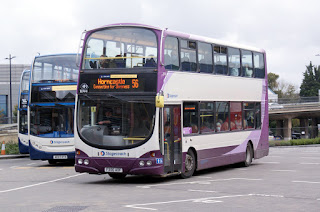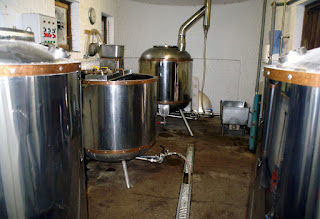Now, starting at Central Station, we look at the shopping area of Lincoln, at the bottom of the hill, alongside the River Witham.
This is Lincoln Central station from High Street level crossing, with the signal box controlling it. The plinthed class 08 has since gone.
A short distance away was East Holmes signal box, supervising another level crossing. 40081 was photographed there in 1984.
On the other side of Lincoln Central was Pelham Street Junction, which once had charge of the flat crossing from St. Marks to the Cleethorpes line.
Beyond that was Sincil Bank signal box, a casualty of the 1970s.
Lincoln Central was served by three "great" companies, the GCR, GNR and GER.
All three became part of the LNER.
Into BR times and a DMU calls.
Now we're in the days of private operators.
From everywhere in this part of the city, there are views up to the cathedral.
There are some fine old buildings in this part of Lincoln.
The River Witham flows through the centre and passes under the High Street via the "Glory Hole".
The Witham joins the Fossdyke Navigation (built by the Romans) at Brayford Pool.
We take shelter from the rain, but it soon ends.
Lincoln Corporation's buses once graced the city streets.
Road Car was the main operator for 'out of town' services.
The old DMU shed was later to become the Road Car depot.
Road Car was taken over by Stagecoach. This one is in the new bus station.
Brylaine also serves the new bus station.
Parkers, plus Hudsons of Horncastle had their termini down a side street.
Other operators included Enterprise & Silver Dawn, Kimes of Folkingham and PC Coaches.
Time for some beer now. The Green Dragon became much improved and Cathedral Ales began to be brewed there. Sadly, both seem to have closed.
Across a busy main road from the old bus station was a pub called Sippers. It closed in 2015.
Luckily, just up the road, the Jolly Brewer is still trading.
A bit beyond the Jolly Brewer is a Bateman's house, the Dog & Bone.
Now all that remains to be done is to go through this gateway..........and start the big climb, but it will have to wait for the next post.





















































































